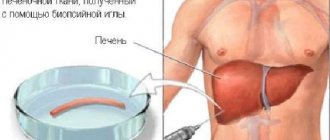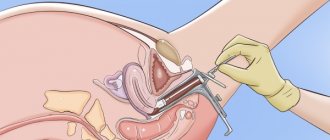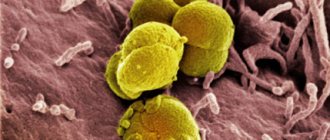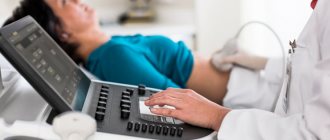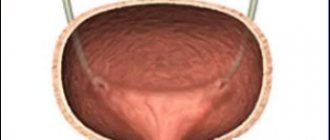Basic biomaterial
There are dozens of known diseases that are classified as infectious in medicine. For each, a different biomaterial is studied. The list of tests for infections depends on what the symptoms of the disease are. We list the most common of them:
- Sore throat, flu, measles, rubella, whooping cough, ARVI.
- Diphtheria, scarlet fever, mumps, chickenpox.
- Ascariasis, giardiasis, nematodiasis, opisthorchiasis.
- Rabies, Lyme disease, encephalitis, hemorrhagic fever.
- Botulism, brucellosis, toxoplasmosis, trichinosis, foot and mouth disease.
- HIV infection, STIs (chlamydia, gonorrhea, syphilis, etc.).
- Hepatitis A, B, C, D, E, F, G.
- Pediculosis, dermatomycosis, onychomycosis, scabies, candidiasis.
- Meningitis, polio, tetanus.
- Erysipelas, gas gangrene, sepsis.
- Styes, pityriasis rosea, pityriasis black, herpes simplex.
- Cholera, smallpox, typhoid fever, tuberculosis, plague, typhus.
- Malaria, rotavirus infection, pneumonia.
- Streptococcal and staphylococcal infections.
The doctor may prescribe the patient to take:
- saliva (candidiasis);
- urine (urethritis);
- feces (giardiasis);
- smear (chlamydia);
- scraping of the mucous membrane (whooping cough);
- blood (hepatitis, HIV, etc.).
What to expect after the study?
After examining the urethra and identifying an infection, the doctor prescribes treatment. Patients with STIs often resort to the Internet to seek treatment on their own. It must be remembered that in the clinic they will be able to receive qualified treatment that will help avoid relapses of the disease.
Both partners need treatment, even if one has no symptoms. Patients will be swabbed and prescribed antiviral and antibacterial therapy. After a month of treatment, they must undergo a full examination for the presence of infection. In addition to taking smears for flora, they are examined for HIV, viral hepatitis (B, C) and syphilis.
https://youtu.be/s65S8GMx5pc
Linked immunosorbent assay
In an abbreviated version, this method is called ELISA. The examination includes smears from the urethra or cervical canal, as well as blood serum. What should you know? The most common and effective blood test for infections. It must be given to a patient who is suspected of having diseases such as hepatitis, STIs, mycoplasmosis, HIV, papillomavirus, influenza and others.
The appointment must be made by a doctor, after which you should prepare for the study. It is based on the detection of antibodies to pathogens. When faced with an infection, the human immune system begins to work, producing a protein characteristic of a specific type of disease. The ELISA method provides 90% accuracy for identifying those infections to which antibodies are formed.
For the study to be reliable, blood sampling from a vein must occur in the morning on an empty stomach. This is done in the treatment room in compliance with all standards. Sometimes the study can be carried out during the day, but the person must not eat for at least 6 hours.
In what cases do they give directions?
The procedure is carried out only as prescribed by the attending physician. If the patient has complaints, the doctor writes a referral for analysis. It has high diagnostic value. Urethral discharge with further examination allows us to determine the quantitative and morphological composition of the microflora located in the urethra. A smear for infection and its subsequent bacterioscopy make it possible to identify the pathogen, determine the number of its strains in the body and prescribe rational therapy.
Main indications for the procedure:
- annual preventive gynecological and urological examination;
- pregnancy planning;
- preventive examination of pregnant women in the first trimester;
- pain and stinging during urination;
- the presence of discharge from the cervical canal, vagina and urethra;
- persistent itching and burning in the genital area;
- suspicion of latent sexually transmitted infections (STIs) or in case of infection of a sexual partner;
- exacerbation of chronic pyelonephritis or cystitis;
- examination before planned urological or gynecological surgery;
- monitoring the effectiveness of treatment.
Urethral culture in pregnant women is mandatory during pregnancy registration. It is included in the list of tests, without which one cannot be sure of the health of the unborn child. All sexually transmitted diseases are especially dangerous for the developing fetus. A smear is taken once, but if indicated, the test can be repeated. A smear for infection is carried out on women working in the food industry, in the service sector and in medicine, because these professions are associated with a high risk of transmitting the pathogen to another person.
All female examinations in the preoperative period should be combined with the appointment of a smear from the urethra, vagina and cervical canal. This is due to possible postoperative risks of infectious complications of untreated disease. A general urological examination in women and men is also always carried out with the appointment of this analysis.
PCR diagnostics
A blood test for infections is also examined using the polymerase chain reaction method. Its essence is to use various enzymes that repeat the RNA or DNA of pathogens to carry out a comparison with the existing database to determine the concentration and type of pathogenic microorganisms causing the disease. To ensure the reliability of the result, the biomaterial is examined in a thermal cycler, which cools and heats the test tubes. This method requires adherence to technology and high professionalism of laboratory technicians, so it should be done in medical institutions that have the appropriate license.
Well diagnosed: HIV, herpes, candidiasis, tuberculosis, encephalitis and other diseases.
Blood sampling is also carried out in the morning on an empty stomach.
STI
If we are talking about infections that are transmitted exclusively sexually, then you will probably be interested to know that back in the 19th century. Only two were known: gonorrhea and syphilis. Today you can take a smear test to identify up to 30 different strains. Among them are chlamydia, trichomoniasis, gardnerellosis and others.
How to properly take a smear test for infection in order to identify or exclude the disease?
If it is possible to choose a day, then you should proceed from the menstrual cycle. It is best to take the test on the eve of critical days or on the fifth day of their completion. This is done to prevent blood from entering.
The flora should not be affected in any way, so the day before a woman should avoid douching, using vaginal suppositories, tampons or ointments. It is recommended to abstain from sex for one or two days, and also not to use special hygiene products.
Most often, in antenatal clinics, the RIF method, an immunofluorescence reaction, is used to examine a smear. The biomaterial is stained with special antibodies that bind to specific pathogens. A laboratory assistant observes them using a fluorescent microscope. With special radiation, pathogenic microorganisms begin to glow. This method gives 80% accuracy.
If a woman or man has real reasons to suspect the possibility of contracting an STI, it is more effective to immediately contact the VD, where more modern and effective methods will be used. By the way, it is better for both partners to be examined at once.
Preparing for the study
To prepare for the study, you should adhere to the following recommendations :
- 3-5 days before the proposed examination, you should abstain from sexual intercourse, so as not to blur the real picture of your health;
- abandon douching procedures, which can damage the mucous membrane and provoke the production of unnecessary enzymes and particles;
- taking any antibacterial medications should be completed no earlier than 8 weeks before the date of the scheduled study;
- The laboratory procedure should be carried out on the 4-5th day of the cycle after the end of menstruation in the pre-ovulation period;
- Before taking a smear, you should try not to visit the ladies' room for two hours, so as not to introduce excess bacteria into the urethra and vagina;
- taking medications administered intravaginally must be completed 21 days before the date of the smear;
- To obtain a more accurate picture, it is recommended that the patient undergo a nutritional provocation during the day. It is carried out by eating something sweet or salty the day before.
These recommendations will allow you to get an accurate result and save the woman from the need to conduct a repeat study, which costs a lot of money.
Hidden infections: do you need to get checked?
A person is designed in such a way that he seeks medical help only when something hurts. But we should talk about prevention and regular testing for hidden infections. Why do they need to be identified and treated? They have a rather long incubation period and the disease is often asymptomatic, but it becomes chronic and causes irreparable harm to the body.
Thus, STIs can cause inflammation in the genitourinary system and lead to infertility. Hidden infections are the cause of decreased potency in men and miscarriage in women. Most often, they are detected during examination of a couple due to a long absence of children or during the registration of a woman for pregnancy and childbirth.
Treating a chronic disease is difficult, so you should check regularly:
- A few weeks after possible infection (casual contact).
- On the eve of conception.
- Annually (if you have a regular sexual partner).
Analysis for hidden infections includes examination of a smear and blood serum. A sample of epithelial cells is taken from the woman's vagina or cervix, and from both sexual partners - from the anus and urethra. Blood serum and smear are tested using PCR. The polymerase chain reaction makes it possible to determine the genus and type of pathogenic bacteria present and to accurately determine the causative agent of the infection.
This is the most modern method for which Mullis, an American physician, received the Nobel Prize. Tests for sexually transmitted infections are usually carried out at the hospital. Including urine.
What to do if you have a bad smear
Poor results of a bacteriological smear should not cause a woman great fear or nervous shock. She needs to remember that all infections that bacteriological analysis shows are treatable.
If the results are unsatisfactory, then you should follow three simple rules:
- Have at least one more consultation with a gynecologist so that he can determine the cause of the disease, and if this is not possible, then prescribe additional diagnostic measures.
- Listen to the doctor’s advice regarding the treatment of the identified pathology.
- Do not attempt to cure yourself at home, so as not to aggravate the process.
We suggest you familiarize yourself with Abundant cocci in a smear: causes
If the bacteriological smear is poor, women are also prohibited from douching. This is due to the fact that it can further disrupt the vaginal microflora, aggravating the course of the disease. With a poor cytological examination, the woman’s action plan is almost the same.
The doctor, having determined harmful changes in the cellular composition of the organ, necessarily sends the patient to undergo additional diagnostic tests, such as colposcopy and cervical biopsy. The final diagnosis is made based on the results of these studies, after which treatment of the pathology begins.
Since cytology tests are screening tests, in most cases pathological changes can be diagnosed in the early stages, when they are still highly treatable if treated promptly and correctly.
Cytological and bacteriological tests in gynecology play an important role not only as screening tests, but also as diagnostic ones.
Every female representative, especially if she has already become sexually active, is recommended to visit a gynecologist at least once a year and undergo these tests for preventive purposes in order to promptly diagnose changes or diseases of the genital organs and begin treatment with the maximum possible effectiveness.
- Candida is a fungal infection of the vagina, urethra or cervix caused by decreased immunity and vaginal dysbiosis. Every woman has encountered the disease at least once. It is quite easy and quick to treat, but sometimes it indicates a more serious pathology - diabetes mellitus.
- An increase in the number of epithelial cells indicates an inflammatory process, and a complete absence indicates atrophy of the vaginal walls or estrogen deficiency. Flat epithelium is dead, exfoliated mucous cells from the surface of the vaginal walls. They constantly fall off, and new cells are born in their place. Normally, a smear should not contain more than 10 epithelial cells.
- Leukocytes. These are immune cells that fight pathogenic microflora. There are no more than 10 of them in a smear of a non-pregnant woman, and up to 30 of them in a pregnant woman. An increase in leukocytes above normal indicates both nonspecific inflammation (with colpitis, vaginosis) and specific (with STIs). It is imperative to find the source of inflammation. This may be adnexitis (inflammation of the appendages), endometritis (inflammation of the endometrium), vaginal dysbiosis, acute form of candidiasis.
- An increase in red blood cells indicates severe inflammation. Erythrocytes are red blood cells; normally their number should not exceed 2. If there are more of them, this means that small vessels were damaged when the cytobrush came into contact with the vaginal wall. Also, the number of red blood cells increases immediately after menstruation.
- A large amount of mucus in the smear indicates inflammation of the cervix, because mucus is secreted there (the vagina does not have glands). Normally, a woman leaks 4 ml of mucus per day. If it is pinkish in color, and when analyzed, leukocytes are found in it, this indicates inflammation of the cervical canal. Also, the amount of mucus increases in pregnant women.
- Gonococci. These are sexually transmitted microorganisms. This bacterium should not be in the smear. If, in addition, leukocytes and erythrocytes are also high, then the patient needs to take a Pap test and undergo a PRC diagnostic to detect microbial DNA.
- Trichomonas. This is an STI that indicates infection with trichomoniasis. Even one microbe requires urgent treatment.
- Key cells indicate an inflammatory process caused by the entry of STIs into the body, as well as the development of diseases of the reproductive system - cervical erosion, ectopia, endometrial polyps. They appear when the acidic environment of the vagina changes to alkaline. Key cells (this is ordinary squamous epithelium surrounded by pathogenic microorganisms) tend to degenerate, so if at least one of them is detected, a woman should undergo regular examination.
The test results are delivered to your hand or sent to the treating gynecologist. If there are deviations from the norm, the doctor prescribes treatment or additional diagnostics.
After completing the course of treatment, you need to take tests again to make sure that the disease has completely gone away. Untreated diseases result in complications and chronic forms. Chronic diseases can only be suppressed, but they cannot be completely eliminated.
If you find an error, please highlight a piece of text and press Ctrl Enter
How to donate urine correctly
There are many types of research, including culture for pathogenic microorganisms: streptococci, enterococci, staphylococci, candida and others. Its purpose is to analyze for infections.
How to take a urine test:
- The day before, you should not eat foods that sharply change its color - beets, berries, carrots and others.
- Urine collection containers should be sterilized.
- It is best to take the morning portion for analysis, collecting it immediately after sleep.
- You should urinate in the toilet for the first one or two seconds, only then begin collecting the discharge for delivery.
- 50-60 ml of liquid is enough.
- If it is not possible to immediately take the tests to the laboratory, the containers with urine should be stored at a temperature of plus 2 to plus 8 degrees Celsius.
How is a urological smear taken from men?
In men, to take a urological smear, a swab is placed into the urethra to a depth of 4 cm.
The doctor makes rotational movements. Then the resulting material is applied to a glass slide. Or it is placed in a test tube and sent to the laboratory for bacteriological testing.
If a urological smear is taken for PCR, this is done using a urogenital probe. The volume of clinical material is the volume of a match head.
Such a probe does not injure the urethra, does not absorb and releases biomaterial well into the transport medium.
Imprint smear from the head of the penis
Sometimes a fingerprint is taken from men. To do this, a glass slide is pressed to the penis. Microorganisms get on it. They can be detected by microscopic examination.
A fingerprint smear is taken in case of balanoposthitis. This is a disease in which the glans and foreskin become inflamed.
Most often, this pathology is caused by candida fungus or nonspecific bacterial flora. Less commonly, bacterial pathogens of sexually transmitted infections.
Intestinal infections
It is necessary to take a stool test if the following symptoms are detected:
- nausea;
- loose stools, especially signs of blood during bowel movements;
- vomit;
- stomach ache;
- temperature is above normal.
Antibacterial treatment should be prescribed only after pathogens have been identified, so analysis for viral infections is necessary. To identify protozoa, it is important to deliver feces to the laboratory within 30-40 minutes, storing it in a closed container at a temperature of +2 to + 4 degrees Celsius. It is necessary to collect a volume equal to half a teaspoon.
No special preparation is required for the test, however, given that laboratories operate in the morning, it is necessary to ensure defecation. The use of an enema is not allowed. The day before, you should follow the drinking regime and exclude drugs and foods that can lead to constipation. When collecting stool, it is necessary to ensure that no discharge from the urinary canal or vagina (in women) gets into the container (a jar with a screw cap). It is unacceptable to use cardboard or matchboxes to collect feces.
To carry out bacterial culture, a smear is taken from the anus. If the results are negative (causative agents of salmonellosis, dysentery, etc. are not identified), the doctor does not exclude rotavirus infection. There are rapid tests that can make a diagnosis within minutes.
It should be remembered: intestinal infections are transmitted from infected people through dirty hands and common household items. The carrier of the disease may not show signs of the disease. That is why minors and everyone working in children's groups must undergo regular scheduled examinations.
Technique of the procedure
Material for analysis for bacteriological culture is taken from the urethra by placing a special probe into it. The probe is a thin soft stick. It is inserted to a depth of about 3 cm. Of course, all materials and test tubes must be completely sterile. After inserting the probe into the urethra, it is twisted slightly to collect secretions. The instrument is then removed and placed in a test tube.
This procedure is not pleasant only in moral terms. In fact, the man feels only slight discomfort during the analysis. Sometimes it is a little unpleasant for several hours after taking a smear. To reduce discomfort, doctors advise the patient to massage the prostate on their own.
The results obtained during the study show whether there are any deviations from the norm and how much they exceed acceptable values.
There are 2 ways to take a smear from the urethra in women:
- In the first case, a narrow applicator with a sterile tampon wrapped around it is inserted into the urethra, pressed against the wall of the organ and carefully removed, slightly rotating.
- The second method is to insert a finger into the vagina, press on the anterior wall of the urethra, and the discharge with a special instrument is collected on a spatula for examination.
During the procedure, the woman needs to sit on a gynecological chair and relax her pelvis. To prevent infection during scraping, it is better to purchase an individual gynecological set, which contains a disposable mirror and a spatula.
Analysis for biological and microscopic examination takes place on a gynecological chair. The technique for taking a smear depends on the patient’s virginity:
- the woman is asked to sit on the gynecological chair and relax the pelvic area;
- the doctor inserts a special applicator into the urethra 2-4 cm, the instrument is slightly pressed against the walls of the urethral canal, and slowly removed by rotating it;
- The applicator is pulled out carefully to collect the epithelial cells well.
This method of taking samples and the urethra is most often used when it is necessary to examine a virgin girl. In other cases, the second method may be used. It involves pressing on the back wall of the urethra with a finger, and the secreted contents are collected with an applicator or probe.
Tests for infections in children: sore throat
Parents should know that any disease associated with high fever and accompanied by sore throat, the formation of white plaque, or enlarged lymph nodes should be carefully examined. The child needs to receive adequate treatment, so a correct diagnosis must be made using a smear from the surface of the tonsils or the back of the throat.
The analysis will determine: influenza; sore throat caused by streptococcus; diphtheria, scarlet fever; infectious mononucleosis, etc. The sooner treatment is started, the more likely it is that no serious complications will arise.
No special preparation is required to take a smear.
Modern methods of testing for infections
How to get tested if a person wants to get tested on his own initiative? You should know that many infectious diseases can be detected using modern techniques by concluding an agreement with one of the licensed laboratories or a private clinic. Today there are express methods that allow you to find out results in a few minutes or within a day. Results from more complex tests will have to wait for several days.
You can start with a rapid test to determine C-reactive protein. A general finger blood test will answer the main question: whether there is a bacterial or viral infection in the body. Depending on the symptoms, doctors will propose an examination plan.
Where to get tested for STDs
To get tested, you should see a doctor.
You can contact your local doctor at your local clinic to find out where such tests are performed.
Read also Yeast in a smear
If you want to undergo an examination anonymously, it is better to contact the registry of a specialized institution.
They will tell you which doctor treats this pathology.
As a rule, this is a venereologist.
Women are treated by a gynecologist, and men by a urologist.
If you need to take swabs from your eyes or throat, you will most likely need to visit an ophthalmologist or ENT doctor.
If the rectum is affected, you may need to consult a proctologist.
Alternative to the Mantoux reaction
It is very important to know that many infectious diseases are diagnosed by blood composition. Many children, for example, are allergic to the Mantoux test. Today there is an alternative - T-SPOT analysis, for which there are no contraindications. Its accuracy reaches 98%. This is one of the most modern tests for infections. How to get tested for tuberculosis?
It is enough to come to the laboratory in the morning on an empty stomach so that the laboratory assistant can take blood from a vein. The result will be ready in two days. By the way, doctors recommend checking children who are allergic to tuberculin once a year, since the Mantoux test is not indicative for them.
